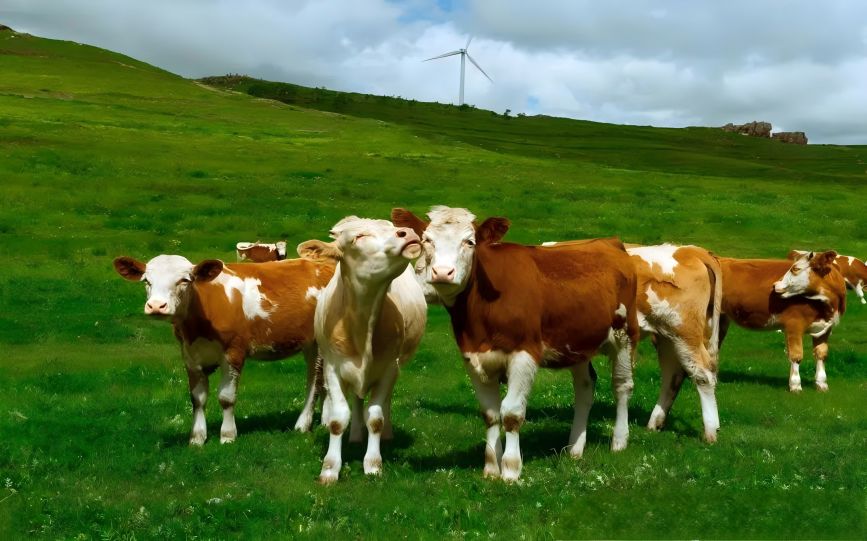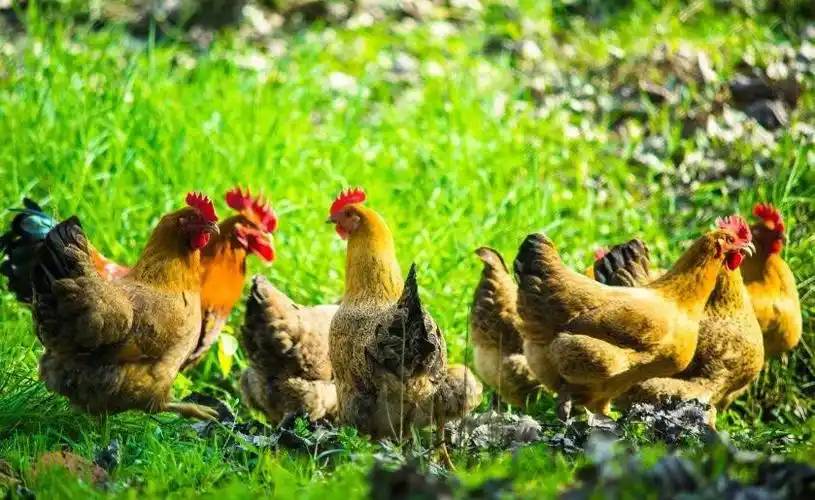What Is the Use of Mannan Oligosaccharide (MOS)?
In recent years, many studies have shown that mannose oligosaccharide (MOS) can not only promote the proliferation of beneficial bacteria, but also adsorb pathogenic bacteria, improve the intestinal microecology, and enhance the immunity of the body[1,2] . At the same time, mannan-oligosaccharides can overcome the shortcomings of antibiotics, prebiotics, acidifiers, etc., with low dosage, pure natural, no residue and strong stability. Adding a small amount of MOS to feed can change the microflora of animal digestive tract and improve the daily weight gain, feed conversion rate and disease resistance of animals, which has a good prospect of application in animal nutrition.
1 Source and Physical and Chemical Properties
Mannan Oligosaccharides (MOS) are oligosaccharides composed of several mannose molecules or mannose and glucose through α-1,2, α-1,3, α-1,6 glycosidic bonds [3]. Glyco-oligosaccharides for commercial use are mainly produced by enzymatic action on microbial cell walls, guar gum, konjac flour, and gum of the leeks, etc. Their physicochemical properties are largely determined by their enzymatic action on microbial cell walls. Its physicochemical properties depend largely on its chemical composition, generally stable at physiological pH and under normal feed processing conditions, soluble in water and other polar solvents; when organic solvents are added to the solution, it will precipitate or crystallize; sweeter than sucrose.
2 Metabolic Characteristics
MOS and other functional oligosaccharides are similar to many feed fibers, containing a large number of chemical bonds that cannot be broken by digestive enzymes, and are hardly digested and utilized in the small intestine, but are concentrated in the posterior part of the digestive tract and utilized by the selective fermentation of the bacterial flora in the posterior part of the digestive tract of the animal[4] , and are released or participated in the metabolism in the form of organic acids, CH4, CO2, H2, and provide energy. energy.
3 Mannan Oligosaccharide (MOS) Uses
3.1 Optimization of the Intestinal Micro-Ecosystem
The digestive enzymes secreted by animals, such as amylase, only digest the α-1,4 glycosidic bond, and have little effect on other bonds. Due to the very small amount of α-1,4 glycosidic bonds, mannan oligosaccharide is not utilized by the animal itself, and is only selectively utilized by beneficial bacteria such as Lactobacillus, Bifidobacterium, Clostridium difficile and so on. After the digestion and decomposition of mannan oligosaccharide, the volatile fatty acids such as propionic acid and butyric acid increased significantly[5] , which lowered the PH value in the intestine, inhibited the growth of acid-sensitive Escherichia coli, Salmonella and other harmful bacteria[6,7] , and promoted the growth of bifidobacteria and other beneficial bacteria[8] . In vitro tests have shown that bacteriocins, macromolecular products produced by Lactobacillus and Bifidobacterium metabolism, have an inhibitory effect on pathogenic bacteria and can inhibit the growth of gram-positive and negative pathogenic bacteria. In addition, Lactobacillus and other beneficial bacteria have a barrier effect on pathogenic microorganisms, in the intestinal tract through the interaction of phosphomuconic acid and intestinal mucosal epithelial cells, and other anaerobic bacteria together occupy the surface of the intestinal mucosa, the formation of biological barriers, preventing pathogenic bacteria, conditionally pathogenic bacteria from colonizing and invading, so that it is competitively discharged out of the body [9].
3.2 Recognition, Adhesion and Exclusion of Pathogenic Microorganisms
Small doses of Mannan Oligosaccharides (MOS) added to the feed can compete with the mannose receptor contained in the intestinal mucosal epithelial cells for the binding site of the mannose-specific lectin of pathogenic microorganisms, MOS and pathogenic bacterial lectin binding sites saturated with pathogenic bacterial lectin and intestinal mucosal epithelial cells corresponding to the receptor binding sites, impeding the mucosal adherence of the pathogenic bacteria; and due to the MOS has a non-digestible, this complex can be passed through the gastrointestinal tract to be excreted, which may also be the result of the binding of MOS and pathogenic bacteria, pathogenic bacteria can not take advantage of the nutrients it provides and die of starvation. This may also be due to the fact that after the binding of MOS and pathogenic bacteria, the pathogenic bacteria could not utilize the nutrients provided by MOS and died of starvation. It was also found[4] that the addition of methyl α-D-mannoside could partially dissociate E. coli adhering to the mucosal cells, which might be due to the fact that mannose could bind to the hydrophilic groups of the bacterial hairs, further increasing the hydrophilicity of the hairs and prompting them to be dislodged.
3.3 Immunomodulatory Effects
Manno-oligosaccharides have certain immunogenicity, can stimulate the immune response of the body, and can bind to the surface of certain toxins, viruses and fungal cells and act as adjuvants for these exogenous antigens, slowing down the absorption of antigens, increasing the potency of antigens, and thus enhancing cellular and humoral immune responses in the animal body. It has been reported that mannan-oligosaccharides and β-glucan can accelerate the recovery of the suppressed immune system of piglets and effectively reduce mortality and diarrhea [10]. Ye Chengyuan [11] pointed out that yeast cell walls have strong antigenic activation properties, which is one of the physiological functions of mannan-oligosaccharides in animals. In addition, due to the special polysaccharides from microorganisms have the role of adjuvant when added to the vaccine, so the addition of appropriate amount of mannan oligosaccharides can improve the antibody response ability, thus strengthening the protective function of the vaccine. In addition to its adjuvant and antigenic properties, mannan oligosaccharide can stimulate the secretion of glycan-binding protein by the liver, thus affecting the immune system.
3.4 Adsorption of Mycotoxins
Manno-oligosaccharides can eliminate the harmful effects of mycotoxins through physical adsorption or direct binding to mycotoxins. It was found that mannan oligosaccharides could bind zearalenone and aflatoxin [12]. Raju [13] showed that mannan oligosaccharides could bind aflatoxin, zearalenone, and ochratoxin by 82.5%, 51.6%, and 26.4%, respectively, in an in vitro test simulating the digestive tract of broiler chickens [14]. The binding ability to aflatoxin depends on the PH value, toxin concentration and the dose of mannan oligosaccharide used.
4 Application of Mannan Oligosaccharides (MOS) in Livestock Husbandry
4. 1 Application of Mannan Oligosaccharides (MOS) in Pig Farming
4. 1.1Improvement of Production Performance and Reduction of Diarrhea Rate
Huang Xiaohong [14], Yue Wenbin et al [15], Zhou Hongli [16], Zou Zhiheng [17], Davis [18] and Dvorak [19] proved that the addition of mannan oligosaccharides to weaned piglet diets can significantly improve piglet daily weight gain, feed conversion ratio, and reduce the rate of diarrhea.
4.1.2 Improvement of Intestinal Flora in Piglets
Zhou Hongli et al.[20] demonstrated that different amounts of Bio-Mos (a kind of commercial mannan oligosaccharide) could inhibit the proliferation of E. coli in the colon, cecum and rectum. Yue Wenbin et al[15] showed that mannan oligosaccharides significantly reduced the number of E. coli in the cecum and colon of piglets, and increased the number of Lactobacillus and Bifidobacterium in the cecum, but the effects on Lactobacillus and Bifidobacterium in the colon were not significant. Yang Lin et al[21] reported that mannan oligosaccharide could significantly inhibit the reproduction of Escherichia coli and Staphylococcus suis among the aerobic bacteria in piglets' intestinal tract, and enhance the reproduction of anaerobic bacteria in the piglets' intestinal tract, and increase the ratio of anaerobic bacteria to aerobic bacteria, which significantly improved the micro-ecological balance of the intestinal tract of piglets.
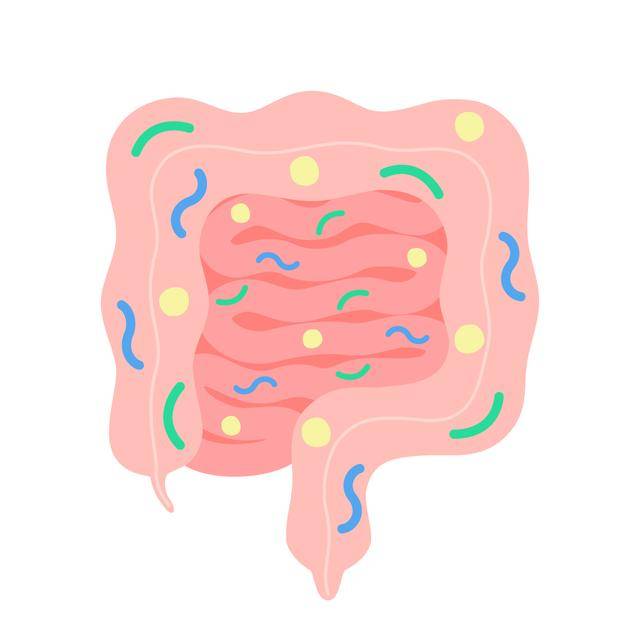
4.1.3 Improvement of Piglet Immunity
Yue Wenbin et al.[15] showed that Mannan Oligosaccharides (MOS) powder could significantly increase the number of T lymphocytes and IgG content in blood. Shao Liangping et al[22] proved that mannan oligosaccharide could significantly increase serum IgA (P<0.01) and IgG (P<0.05) levels in lactating piglets, but it had no significant effect on IgM levels (P>0.05).SPring et al. demonstrated that mannan oligosaccharide could significantly increase serum IgA, IgG and IgM levels in aseptic piglets; however, in normal piglets, it was found that mannan oligosaccharide could significantly increase serum IgA, IgG and IgM levels, but in normal piglets, it was found that mannan oligosaccharide could significantly increase serum IgA, IgG and IgM levels. However, in the study on normal piglets, mannan oligosaccharide significantly increased the serum IgA level, but had no significant effect on IgG and IgM.
Song Qiongli et al[23] showed that, without vaccination, the addition of appropriate oligosaccharides could increase the serum IgG level of piglets to a certain extent, but the difference was not significant (P>0.05); after vaccination, the addition of appropriate oligosaccharides in the diets could significantly (P<0.05) or extremely significantly (P<0.01) increase the serum IgG level of piglets compared with that of the control group, which to a certain extent indicates that oligosaccharides have the function of immune enhancers. White et al.[24] found that the addition of oligosaccharides containing mainly mannan-oligosaccharide yeast increased serum IgG and IgA levels in pigs (P<0.01 for the former and P<0.1 for the latter). Zhou Hongli et al.[20] showed that the addition of mannan oligosaccharide could significantly increase the serum IgG content, but the effect on IgA and IgM content was not significant. 4.1.4 Enhancement of GSH-PX (reduced glutathione) and SOD (superoxide dismutase) activities
Yue Wenbin et al.[15] and Shao Liangping et al.[25] observed that mannan oligosaccharides increased the activities of SOD and GSH-PX in piglets.
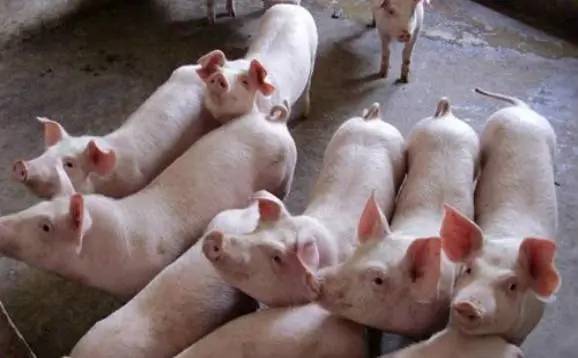
4.2 Application of Mannan Oligosaccharides (MOS) in Poultry Farming
4.2.1 Improvement of Production Performance
Gao Shudong et al[26] showed that the addition of mannan oligosaccharide to diets could significantly increase the daily weight gain of broiler ducks, and Sims[27] reported that MOS could improve the performance of turkeys, and Hooge et al[28] demonstrated that mannan oligosaccharide could significantly improve the performance of broiler chicks.
4.2.2 Improvement of the Intestinal Environment
Shao Liangping[29,30], Yu Guiyang[31], Zhou Yinghua[32] and Gils[33] showed that the addition of mannan oligosaccharide to diets significantly promoted the proliferation of lactobacilli and bifidobacteria, and inhibited the growth of Escherichia coli. Shao Liangping[29,30] showed that the addition of mannan oligosaccharide to the diet significantly reduced the pH value of intestinal contents, and Sims et al[27] reported that MOS significantly reduced the number of Clostridium perfringens in the large intestine of turkeys.
4.2.3 Improvement of Immunity
Shao Liangping et al[29,30] showed that the addition of mannan oligosaccharides to the diet significantly increased the cellular immune function, leukocyte phagocytosis and PHA lymphocyte conversion rate in chickens. Li Guang et al[34] showed that MOS had the effect of increasing the weight of immune organs. Zhou Yinghua et al[32] showed that the addition of Bio-Mos significantly increased the percentage of T lymphocytes in blood. It was found that glyco-oligosaccharides could increase the level of IgA in broiler bile by 14.2%[35] , significantly increase the level of IgA, IgG, IgM in turkey intestinal mucosa, and increase the level of anti-infectious bursal virus antibody in broiler breeders[36-38] .
4.2.4 Reduction of Cholesterol in Eggs
Stanley et al [39] reported that the cholesterol content of eggs was reduced in the experimental group with addition of mannan oligosaccharide compared to the control group.
4.3 Application of Mannan Oligosaccharides (MOS) in the Cattle Industry
4.3.1 Regulation of Immunity
Wang Dingfa et al [40] found that Mannan Oligosaccharides (MOS) significantly increased the levels of IgG and IgA in calves before and after the test, and Franklin et al [41] showed that feeding MOS increased the specific immune response to rotavirus in dry period heifers.
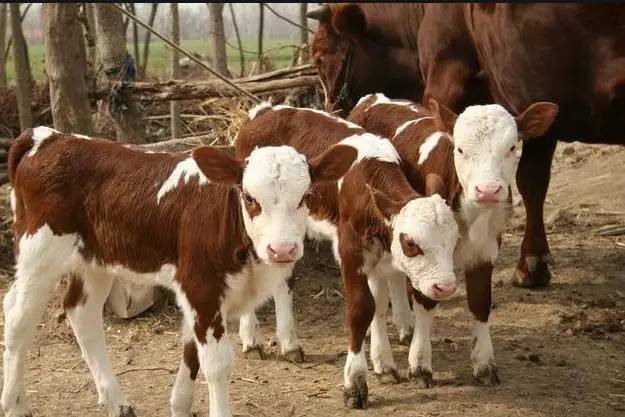
4.3.2 Increase Calf Weight Gain per Day, Reduce Morbidity
Newman et al [42], Dildey et al [43] reported that mannan oligosaccharide can significantly increase the daily weight gain of calves and reduce the morbidity rate. Wang Dingfa et al [40] showed that feeding MOS to calves significantly increased their weight gain and economic efficiency.
5 Factors Influencing the Effect on the Action of Mannan Oligosaccharides
5.1 Purity, Degree of Polymerization and Physiological Activity of Glyco-Oligosaccharides
The structure of oligosaccharides is very complex due to the various ways of monosaccharide linkage, and different types of mannan oligosaccharides have different purity and polymerization; the structure of mannan oligosaccharides of the same type from different manufacturers and batches may be different, and the biological activities and effects of mannan oligosaccharides have different degrees of differences.
5.2 Amount and Mode of Addition of Mannan Oligosaccharides
The amount of mannan oligosaccharide added to the diet must be appropriate; insufficient addition will not achieve the desired effect; excessive addition will lead to diarrhea. In addition, different methods of administration may lead to different effects.
5.3 Level of Feeding Management
Shi Baoming et al [44] reported that under good feeding conditions, the effect of dietary addition of mannan oligosaccharide was not obvious, and only when the reduction of production performance was greatly affected by intestinal factors, mannan oligosaccharide could show significant growth-promoting effects.
5.4 Age and Health Status of Animals
The age and health status of the animal is a direct factor affecting the efficacy of mannan oligosaccharides. The flora of the digestive tract varies greatly depending on the age and stage of growth and development of the animal. The increase in the concentration of E. coli and other pathogenic bacteria after weaning is one of the main causes of diarrhea in piglets, therefore, the effect of adding oligosaccharides at this stage may be more obvious.
5.5 Types of Diets
Corn is low in non-digestible sugars, but barley, wheat and soybean products are high in non-digestible sugars such as cottonseed sugar and fructose. Therefore, the "masking or diluting effect" of oligosaccharides in barley, wheat and soybean products may affect the results.
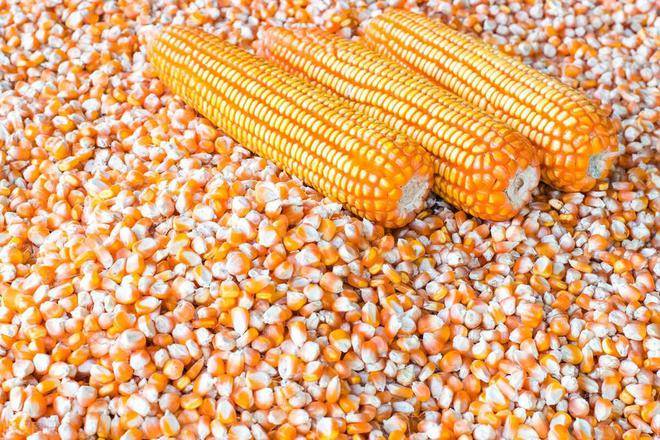
5.6 Combined Use of Glycan Oligosaccharides with Antibiotics and Other Types of Oligosaccharides
Studies have shown that mannan oligosaccharides are more effective in combination with antibiotics and other types of oligosaccharides than alone.
6 Outlook
Gastrointestinal diseases are important factors affecting the body condition of young animals and are also one of the most important factors leading to the death of newborn animals. Research on the application of mannan oligosaccharide in animals has shown that it can affect animal health and performance by competing with gastrointestinal pathogens for the attachment sites of the intestinal epithelium and by improving the immunity of the animals, and it can replace antibiotics to a certain extent. Manno-oligosaccharides are natural ingredients in feeds, do not cause pollution, and can improve the disease resistance of the animal body, so they have good application prospects in animal nutrition. However, the mechanism of mannan-oligosaccharides in animal nutrition is still unclear, therefore, we should strengthen the research on the relationship between the composition, structure and function of mannan-oligosaccharides, the direct or indirect way of affecting the function of the body, and the specificity of the effect in different animal species, ages and physiological conditions.
Reference:
[1]Bland E J, Keshavarz T, Bucke C. The influence of small oligosac - charides on the immune system [J]. Carbohydrate research, 2004,339 (10): 1 673~1 678
[2]Grieshop C M, Flickinger E A, Bruce K J, et al. Gastrointestinal and immunological responses of senior dogs to chicory and mannan - oligosaccharides [J ]. Archives of animal nutrition, 2004, 58(6): 483~493
[3] MAO Sheng-Yong. Research on the application of mannan oligosaccharide in animal production[J]. Feed Research ,2000( 9):10~13
[4] PAN Shuyuan , CHEN Bifang , ZHANG Rijun , et al. Application of microecological effect additive mannan-oligosaccharide[J]. China Feed , 1999( 22) : 15~17
[5]Zdu#czyk Z, Juskiewicz J, Jankowski J, et al. Performance and cae- cal adaptation of turkeys to diets without or with antibiotic and with different levels of mannan-oligosaccharide [J]. Archives of animal nutrition, 2004, 58(5): 367~378
[6] Zdunczyk Z, Juskiewicz J, Jankowski J, et al. Metabolic response of the gastrointestinal tract of turkeys to diets with different levels of mannan- oligosaccharide [J]. Poultry science, 2005, 84 (6): 903~909
[7] Spring P, wenk C, Dawson K A, et al. The effects of dietary man- naoligosaccharides on cecal parameters and the concentrations of enteric bacteria in the ceca of salmonella-challenged broiler chicks[J]. The effects of dietary man- naoligosaccharides on cecal parameters and the concentrations of enteric bacteria in the ceca of salmonella-challenged broiler chicks[J].
[8] Grieshop C M, Flickinger E A, Bruce K J, et al. Gastrointestinal and immunological respon- ses of senior dogs to chicory and mannan - oligosaccharides [ J]. Archives of animal nutrition, 2004, 58(6): 483~ 493
[9] ZHANG Hongmei, ZHEN Erying, JIANG Huimin. Progress in the application of mannan oligosaccharide in animal nutrition[J]. Feed Wide Angle ,2003( 9): 15~18
[10] CHEN Wen-Bin,AI Wei. Progress in the application of mannan oligosaccharide[J]. China Feed,2004( 4) :28~30
[11] Yeh, Cheng-Yuan. Oligosaccharide feed additives[J]. Livestock and Poultry Industry ,1999( 10) :12~13
[12]zaghini A, Martelli G, Roncada p, et al. Mannanoligosaccharides and aflatoxin B1 in feed for laying hens: effects on egg quality, aflatoxins B1 and M1 residues in eggs, and aflatoxin B1 levels in liver [J]. poultry science, 2005, 84(6): 825~832
[13]Raju A G. Effect of mannan -oligosaccharide supplementation on the taxonomy in the crop Food chemistry semtemper 80 -81 [J]. poultry sci., 1998,50(1):61
[14] HUANG Xiaohong ,LIN Fanping. Prevention of diarrhea in weaned piglets by mannan-oligosaccharides[J]. Chinese Journal of Preventive Veterinary Medicine ,2000 ,22(Supplement) : 163~165
[15] YUE Wen-Bin,CHE Xiang-Rong,ZANG Jian-Jun. Effects of mannan-oligosaccharides on intestinal flora and immune function of weaned piglets[J]. Journal of Shanxi Agricultural University ,2002 ,22( 2) :97~100
[16] ZHOU Hongli,ZHANG Shirui. Effects of mannan oligosaccharide on growth performance and intestinal flora of weaned piglets[J]. Feed Research ,2002( 8):4~6
[17] ZOU Zhiheng,SONG Qiongli,WEN Hong,et al. Effects of fructooligosaccharides and mannan oligosaccharides on growth performance of piglets[J]. Jiangxi Agricultural Journal ,2004 , 16( 2) :60~63
[18] Davis M E, Maxwell C V, Brown D C. Effect of dietary mannan oligosaccharides and (or) pharmacological additions of copper sul- fate on growth performance and immunocompetence of weanling and growing/finishing pigs [J]. Journal of Animal science, 2002, 80 (11): 2 887~2 893
[19] Dvorak R A. Effects of Bio -Mos, FOs and Carbadox on perfor- mance of pigs Days 0~21 postweaning [J]. Anim. sci. 1998
[20] ZHOU Hongli , ZHANG Shirui , HE Jianhua. Effects of mannan oligosaccharide on intestinal flora, antibody level and growth performance of weaned piglets[J]. Journal of Hunan Agricultural University ,2002 ,28( 2) : 135~139
[21] YANG Lin ,HUO Guicheng ,YANG Lijie ,et al. Effects of microecological preparations on the non-specific immune function of piglet intestine[J]. Heilongjiang Animal Husbandry and Veterinary Medicine ,2004( 7) : 13~15
[22] SHAO Liang-Ping, ZHOU Lun-Jiang, LI Guo-Ping, et al. Effects of oral administration of mannan-oligosaccharides (MOs) on immune function and blood GsH-px and sOD in lactating piglets[J]. Chinese Journal of Veterinary Medicine ,2000 ,20 ( 3) :257~260
[23] SONG Qiongli,ZOU Zhiheng,WEN Hong,et al. Effects of fructooligosaccharides and mannan-oligosaccharides on the IgG level of piglets in place of antibiotics[J]. Jiangxi Journal of Animal Husbandry and Veterinary Medicine ,2004( 6) :24~25
[24]white L A, Newman M C, Cromwell, et al. Brewers dried yeast as a source of mannan oligosaccharides for weanling pigs [J]. Journal of Animal science, 2002, 80 (10): 2 619~2 628
[25] SHAO Liang-Ping , ZHOU Lun-Jiang , FEI Zheng-Fang , et al. Effects of mannan oligosaccharide on immune function and blood antioxidant enzymes in piglets[J]. Journal of Nutrition ,2000 ,22( 1) :82~84
[26] Gao Shudong,Ma Jian,Ji Mingshan,et al. Investigation and study on the effects of wheat-based diets supplemented with Wamycin and maltogenic enzymes on the performance of broiler chickens[J]. Feed Wide Angle ,2003( 4) :33~35
[27]sims M D, Dawson K A, Newman K E, et al. Effects of dietary mannan oligosaccharide, bacitracin methylene disalicylate, or both on the live performance and intestinal microbiology of turkeys [J]. poultry science, 2004, 83 (7): 1 148~1 154
[28] Hooge D M, sims M D, sefton A E, et al. Effect of Dietary Mannan Oligosaccharide, with or without Bacitracin or Virginiamycin, on Live performance of Broiler Chickens at Relatively High Stocking Density on New Litter [J]. Journal of Applied poultry Research, 2003,12(4): 461~467
[29] SHAO Liang-Ping,ZHOU Lun-Jiang,LI Guo-Ping,et al. Effects of different doses of mannan oligosaccharide on cellular immunity and intestinal microecology of chickens[J]. Journal of Fujian Agricultural University ,1999 ,28( 1) :86~89
[30] SHAO Liang-Ping, ZHOU Lun-Jiang, LI Guo-Ping, et al. Regulatory effects of mannan oligosaccharide and Streptococcus faecalis on cellular immunity and intestinal microecology in chickens[J]. Chinese Journal of Veterinary Medicine ,2000 ,20( 1) :58~61
[31] YU Guiyang ,ZHANG Hao ,ZHENG Chunfang. Effect of mannan oligosaccharide on intestinal microorganisms of broiler chickens. Veterinary medicine and feed additives ,2004 ,9( 5) :7~9
[32] ZHOU Ying-Hua, ZHANG Shi-Rui. Effects of mannan-oligosaccharides on production performance, intestinal microorganisms and immunity of broiler chickens[J]. Journal of Hunan Agricultural University ,2003 ,29( 3) :250~253
[33] Gils B V. Dietary mannan -oligosaccharides and their effect on chicken caecal microflora in relation to salmonella Enteritidis colo- nization [J]. Avian pathology, 2002, 31 (1): 49
[34] LI Guang ,FU Mingzhe ,LIU Lu. Effect of α-manno-oligosaccharides on the development of immune organs in chicks. Journal of Gansu Agricultural University ,2001 ,36( 4) :383~387
[35] savvage T F, zakrzcwska E I, Andreasin J R. Effect of MOs (Bio- Mos) added to poultry starter in performance and health [J]. poul- try sci., 1996a, 70 (1): 139
[36] savvage T F, zakrzewska E I, Andreasin J R. The effect of feeding mannan oligosaceharide on immunoglobulins, plasmas IgG and bile IgA of worlstad Mw male Turkeys [J]. poult. sci., 1996b,76(1):139
[37] Cetin N, Gigli B K, Cetin E. The effects of probiotic and man- nanoligosaccharide on some haematological and immunological pa- rameters in turkeys [J ]. Journal of veterinary medicine, 2005, 52
(6): 263~267
[38]shashidhara R G, Devegowda G. Effect of dietary mannan oligosac- charide on broiler breeder production traits and immunity [J]. poultry science , 2003, 82 (8): 1 319~1 326
[39]stanley V G, Grayand C, Chukwu H. Effects of mannano-ligosac- charide (Bio-Mos) on liver and egg cholesterol and tissue protein concentration in chickens [J]. poultry sci. 1996, 75(1): 61
[40] WANG Dingfa ,WANG Chunfang ,LIU Xiaohua. Repeated experiments on feeding mannan oligosaccharide to calves[J]. Grain and Feed Industry ,2004( 9) :34~35
[41]Franklin s T, Newman M C, Newman K E, et al. Immune parame- ters of dry cows fed mannan oligosaccharide and subsequent trans- fer of immunity to calves [J ]. Journal of dairy science, 2005, 88 (2): 766~775
[42] Newman K E, sping p, snitcer s. Effect of theimal treatment on the ability of mannanoligosaccaride to adsorb entric bacteria [J]. Anim. sci. 1995, 73 (1): 325
[43]Dildey D, selars K. Effect of mannan-oligosaccharide supplementation on performance and health of Holstein calves [J]. Dairy sci. 1997, 80(1): 9
[44] Shi Baoming , Shan Anshan . Oligosaccharides and their application in pig feed [J]. Pig breeding ,2000 ( 1) :2~6


 English
English French
French Spanish
Spanish Russian
Russian Korean
Korean Japanese
Japanese

